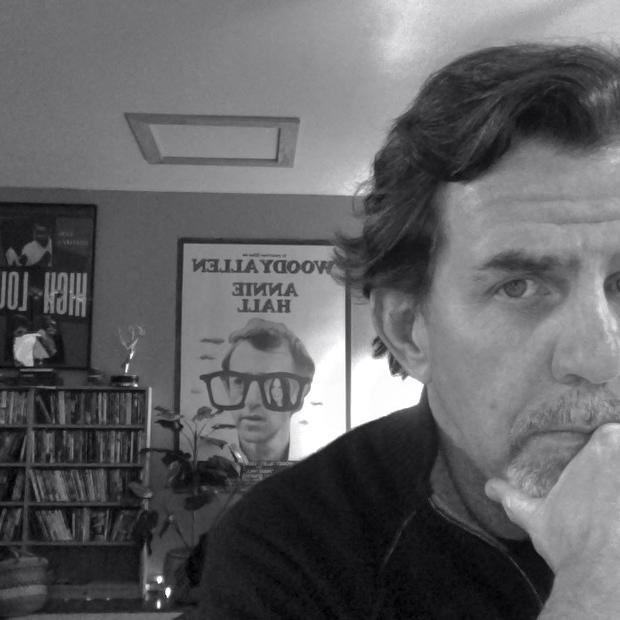
The 206
From the man who gave us all permission to insult Renton comes The 206, John Keister’s return to local comedy after more than a decade. A slightly re-worked version of the original Almost Live!, itself modeled on Saturday Night Live, the show features Keister, perennial local wit Pat Cashman, and Cashman’s son Chris, the most versatile of the trio. Airing online and after SNL on Saturday nights, the show still has that hit-or-miss quality popular with late-night stoners, a freewheeling “let’s see if it sticks” attitude when tossing out the one-liners. Legal weed, the Mariners and KING-TV’s ego-enhanced reporter, Jim Forman, are favorite subjects. A dilapidated trailer is the setting for “Renton Abbey,” Chris Cashman hosts their Antiques Roadshow spoof (circa 2075), and Keister anchors their news round-up “The 411.” The production values are top-notch — thanks to director of photography Mike Boydstun — and the main set has a friendly wine-bar-at-happy-hour vibe, with a standing audience encircling our three amigos. If the show had an authentic amigo, or anybody of color, and also a woman or two, it may find an audience beyond the pasty-white, we-miss-the-Sonics demographic (of which, granted, I’m a member). So far, even the jokes that do land are accompanied by an audible ouch. “You can always spot a wine snob from Enumclaw,” winks Cashman, the Elder: “They’re the ones smelling the screwtop.”
What is Neorealism?
This insightful video essay not only offers a four-and-a-half minute lesson in the essential art of film editing, it also exposes the conflict between the humanism of the European auteur and the coarse commercialism of the Hollywood mogul. Sight & Sound magazine compares two different versions of the 1953 Vittorio De Sica film, Terminal Station, starring Montgomery Clift and Jennifer Jones. The movie was the misbegotten offspring of an unholy alliance between De Sica, the Italian neorealist master, and David O. Selznick, the pill-popping producer of Gone With The Wind, notorious for writing long, detailed diatribes to his directors while buzzing on Benzedrine. DeSica’s 89-minute cut of the film was carved down to 64 minutes by Selznick’s butchers and released under the title Indiscretion of an American Wife. The movie stunk like the offal it had become. Both versions are now available on a Criterion disc, but watch this short to understand the crucial difference between the two cuts. De Sica preferred long takes, following his stars all the way through a crowded train station, allowing us to view the unwashed masses around them. After Clift or Jones exited a scene, the vacated space would be filled by an extra, except De Sica didn’t think of them as extras. To him they were “vital inhabitants” within the world his main characters moved. These “in-between” moments drove Selznick to his scissors. He called them “unnecessary diversions.” Of course, Selznick’s slash-and-burn imperative is standard practice today. When was the last time a Hollywood film, or even an American-made independent film, lingered on the negative space, the silence that remained after the explosion, the unnamed vital inhabitant at the edge of a frame? What is Neorealism illuminates a kind of filmmaking where time and place are more critical than plot or story.
Roddy McDowell’s Home Movies
Speaking of silence, this collection of home movies shot by actor Roddy McDowell (remember Cornelius in Planet of the Apes?) are breathtaking artifacts from a bygone era. Filmed in 1965 at McDowell’s modest Malibu beach house, these soundless, celluloid gems feature the most glamorous cast in the world kicking back with hot dogs, beers and beach volleyball. Where to start? A young, honey-skinned Jane Fonda sticking her tongue out at the camera; Julie Andrews strolling the beach with her naked, adorable toddler; Paul Newman downing a Busch lager and running into the surf; Natalie Wood with her come-hither freckles and fluttering eyelashes, flanked by two nameless hunks; Newman sharing a laugh with Ben Gazzara and Kirk Douglas who, with his red swimsuit and golden-hued pecs, really does look like Spartacus. Ruth Gordon, Judy Garland, Lauren Bacall, Lee Remick and even David O. Selznick (see above) make cameos. The well-composed footage captures the cozy familiarity of the gatherings, as if the celebrities were simply the people next door. But what is truly remarkable about these silent films is their poignancy. The unguarded gestures and playful repartee suggests a simpler, less hectic world, where no one buried their faces in handheld devices or posted private tragedies on YouTube. To be sure, the clips represent ephemeral interludes in the pressurized lives of movie stars, but these summer frolics, tinged with a wistful patina, play like found footage from a time capsule.
For more nuggets from the Digital Prospector, go here. Photo of comedian John Keister courtesy Washington State Department of Transportation.


